As Abed Nadir says, this is starting to feel like a bottle episode.
In this time of quarantine and social distancing, it might be beneficial to look back at the very best bottle episodes of television. As we all settle down in lock down, some of our favorite characters have already mastered the art of dealing with drama and character nuances while stuck in single locations. It’s time to learn from the masters, yeah?
Since there are many types of bottle episodes, we’ve broken them down by situations, just in case in the midst of all this, a slug-like demon possesses you and your group needs to figure out how best to determine who’s about to slaughter everyone, or you just need to know how to handle awkward, passive aggressive family dinners.
Family Dinners
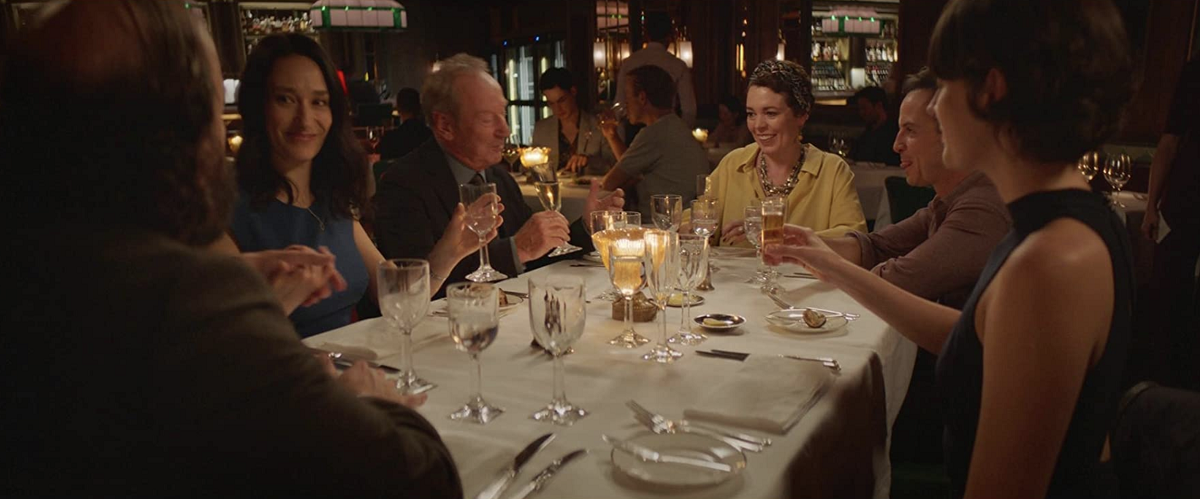
Fleabag, Season 2 Episode 1
Fleabag meets up with her family for the first time in a year at an engagement dinner for her father and godmother. The episode takes place for 26 minutes seated at the dinner table at a fancy restaurant, with every character — Dad, Godmother, Claire, Martin, Fleabag, and The Priest — in attendance, their issues with each other largely ignored under the guise of passive aggression until it ends in bloodshed. It’s not a fun family dinner, but Phoebe Waller-Bridge’s tightly controlled script provides effective entertainment for a seemingly innocuous dinner party. –Katey Stoetzel
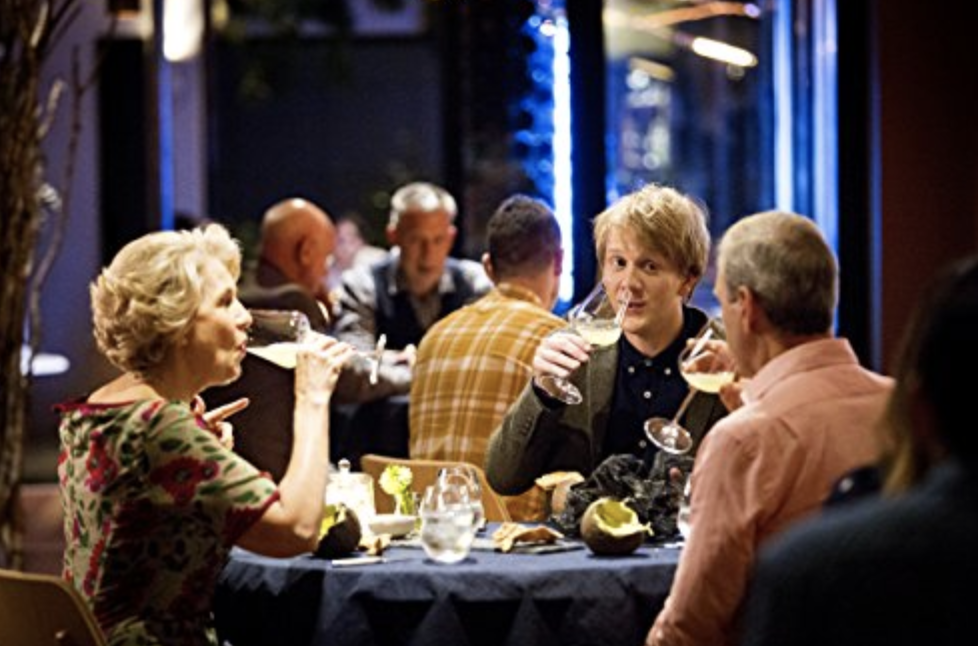
Please Like Me, “Degustation”
Josh takes his divorced parents out for an extravagant 15-course meal as something nice to do. As each course is set down on the table and drinks flow loosely, Josh, Rose, and Alan take time to reconnect after four seasons of intense family drama. Some of their conversations are light — Alan’s impression of an emu is a particular noteworthy occurence — while some topics hit the hardcore issues they’ve faced throughout the series, such as Rose’s bipolar disorder and Josh’s recent breakup. It’s a time for easy laughs and equally harder admissions, broken up by the wait staff appearing for another course. For a show that’s all about the meals we sit down for, “Degustation” really gets at the heart of what a family meal is all about. The episodes following this one make this episode even more sobering, but for that, I’d suggest watching the entire series. –Katey Stoetzel
The Monster’s Inside
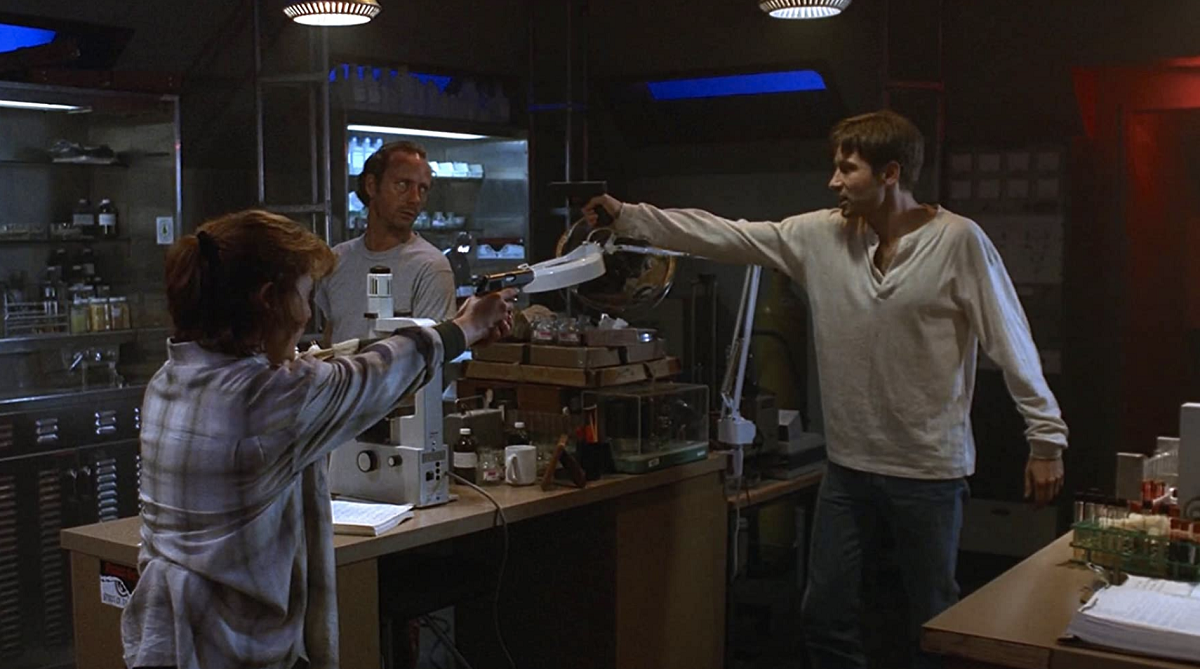
The X-Files, “Ice”
In an excellent homage to The Thing, Mulder and Scully’s new working relationship is tested early in season one as they head out to investigate a recently discovered parasite that’s responsible for the deaths of a geological drilling team. Confined to the small laboratory with three other scientists, a dog, and the helicopter pilot, the episode follows a pretty standard game of “who’s possessed now?” It’s effective, though. Ultimately, it’s the amount of trust between Mulder and Scully that takes center stage this episode, considering it’s still early season one. –Katey Stoetzel
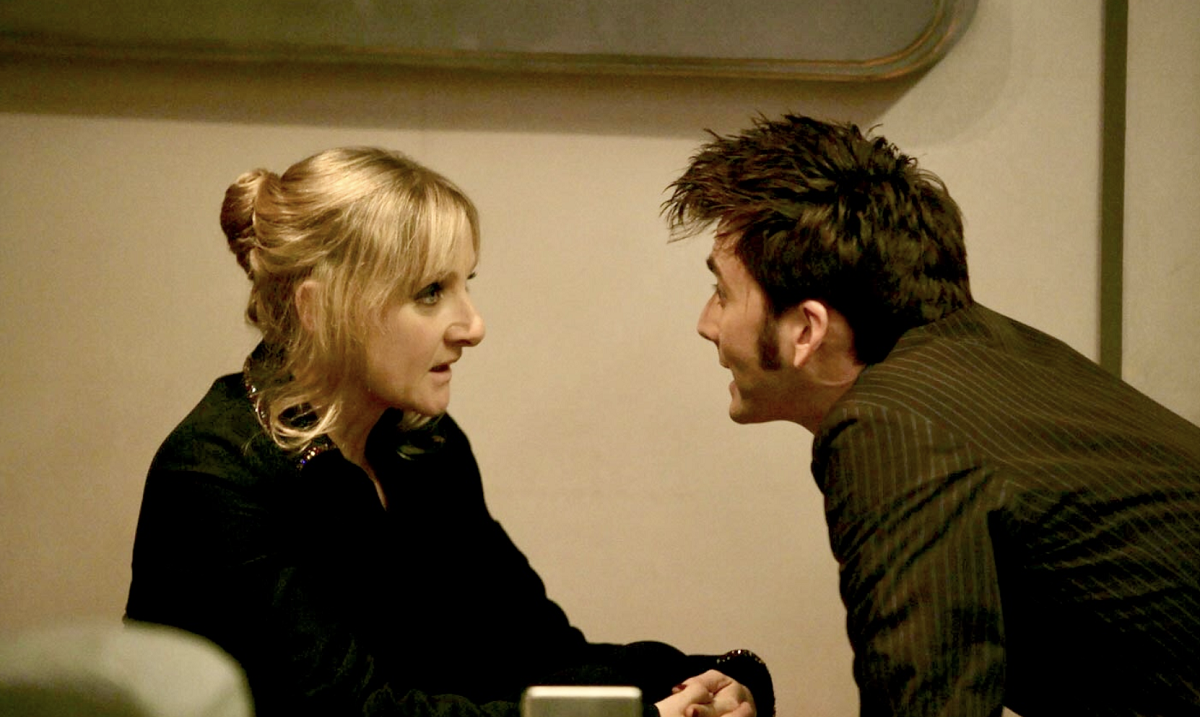
Doctor Who, “Midnight”
Oh, what a creepy, creepy episode. Doctor Who may be a light-hearted sci-fi drama most of the time, but “Midnight” is an example of the show at its most terrifying. Upon first glimpse, the episode itself seems fairly innocent – The Doctor takes a pleasure cruise on a planet called Midnight, where the geological makeup is full of diamonds, but deadly to be exposed to. It turns nightmarish when a mysterious knocking comes from outside the space shuttle cruise ship. When it enters the confines of the ship, it possesses one of the passengers and begins mimicking human speech and action. The Doctor must try to convince the rest of the passengers to remain calm, even as the very base of human emotions takes control of them: fear. –Katey Stoetzel
Outbreak!
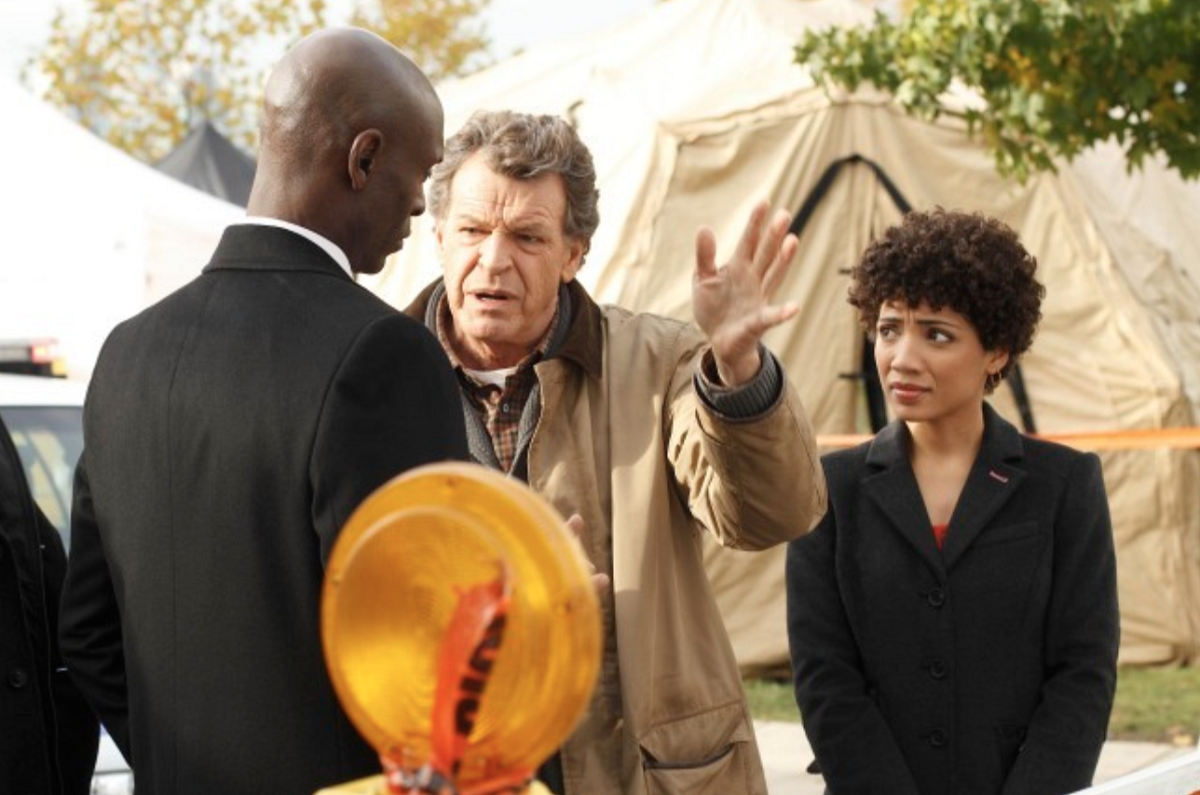
Fringe, “What Lies Below”
This perhaps might be a little close to reality, but it does serve as an excellent reminder for why being in the office is a bad idea right now! A fast-acting virus gets let loose in an office building, causing a building-wide quarantine. Unfortunately, Peter and Olivia have already entered to investigate the first death. The episode stokes that outbreak fear well, with a little extra sci-fi drama – the virus itself wants to break free from quarantine to infect the outside world, causing the infected to take drastic measures to get out. The stakes are high with two of our main characters inside, exposed, but the mystery of Peter checks another box in Something’s Not Right as the outbreak brings back memories for Walter. –Katey Stoetzel
Advertisement
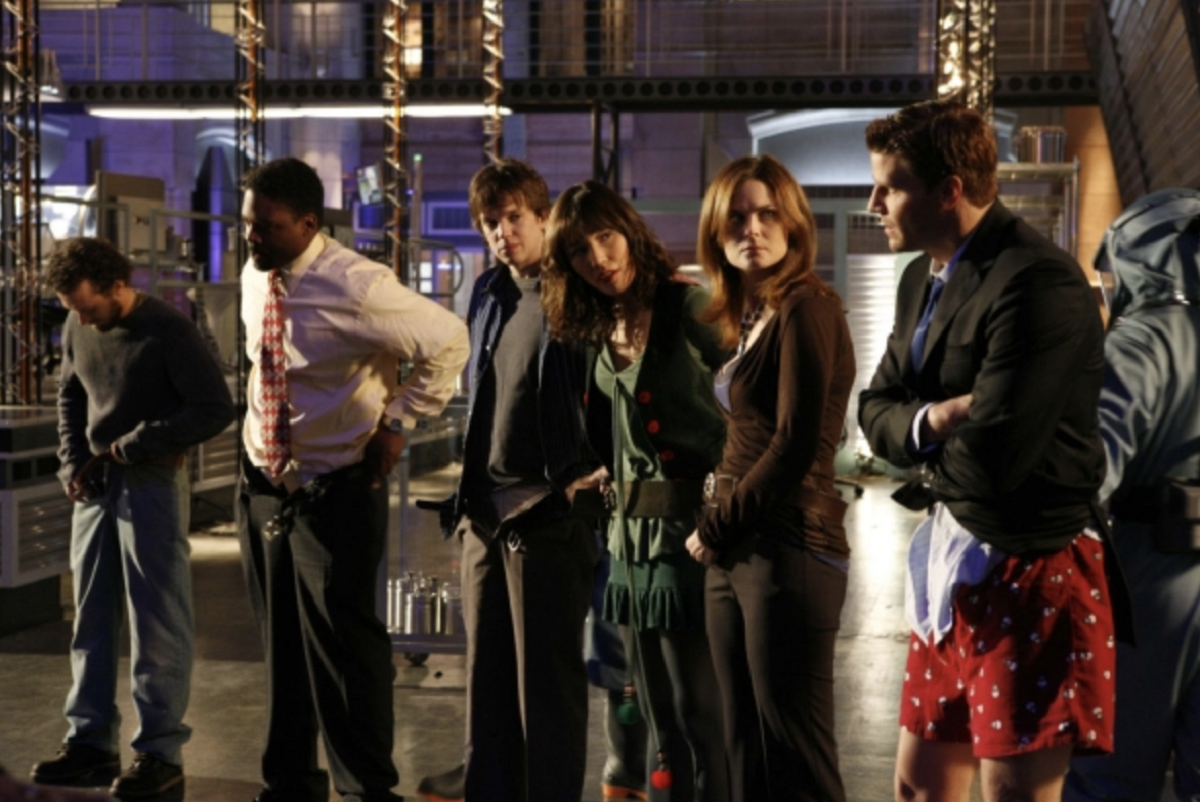
Bones, “The Man in the Fallout Shelter”
Definitely on the lighter side of outbreak scenarios, the season one episode traps all of our characters in the lab after Agent Booth brings a body in for Brennan’s inspection. Hodges and Zach barely break the skull open before releasing a toxin from the body, forcing emergency procedures to take place. Oh, it’s also Christmas. It’s a wonderful episode that sets aside the case of the week — though it is a fairly moving one — to focus on character interactions and relationships. –Katey Stoetzel
Talking, talking, talking
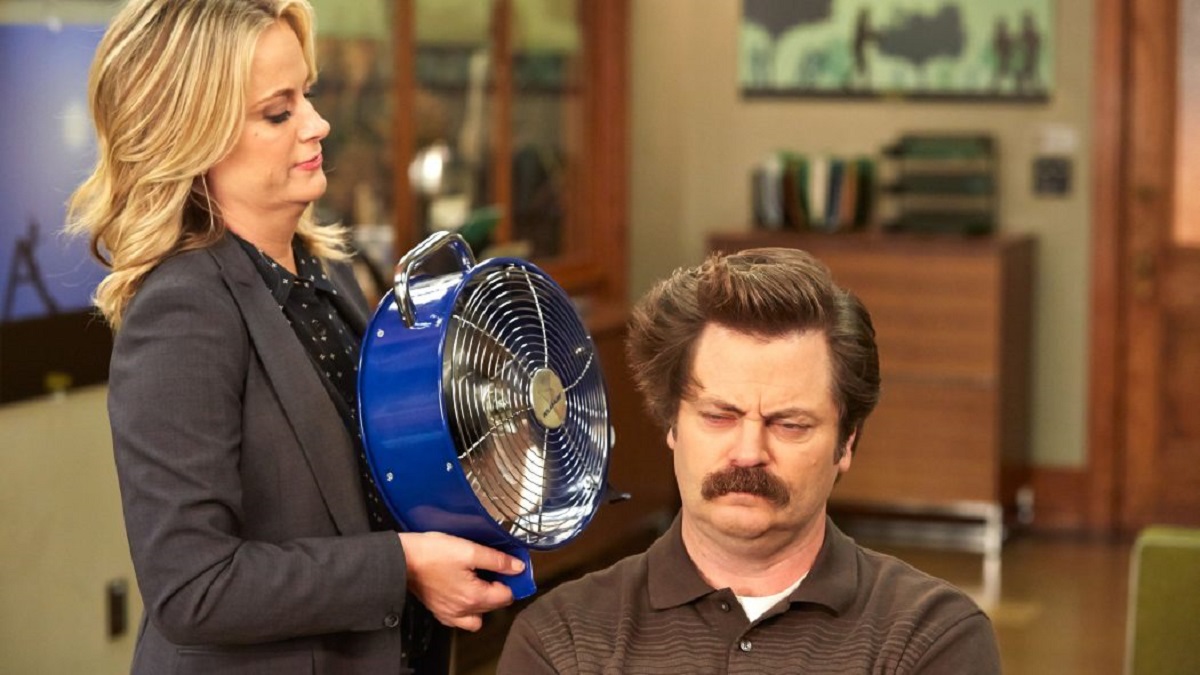
Parks and Recreation, “Leslie and Ron”
This entire episode hinges entirely upon the strength of Leslie and Ron’s friendship and it doesn’t disappoint. Years after Leslie (Amy Poehler) left the Parks and Rec branch for bigger and better things, her friendship with Ron (Nick Offerman) has deteriorated to the point of not speaking to each other. Locked inside their old office for ten hours, they’re forced to finally communicate and get to the root of why their friendship went south. Ron, who doesn’t like talking about his feelings, admits that he felt hurt being left behind while everyone else moved on.
Leslie, on the other hand, was angry with Ron for not revealing why he’d quit the department to begin working with a company that tore down the beloved home of Leslie’s best friend, Ann (Rashida Jones) — a home that sits next to the park project that was at the center of the show’s premise in early seasons. The two realize that their lack of communication hurt their friendship a lot more than it should have and work to restore what they once had. Ultimately, this bottle episode is a beautiful reminder of the development Leslie and Ron have had over the course of the show and an example of how the deepest of friendships can always be revived if there’s a strong enough foundation. —Mae Abdulbaki
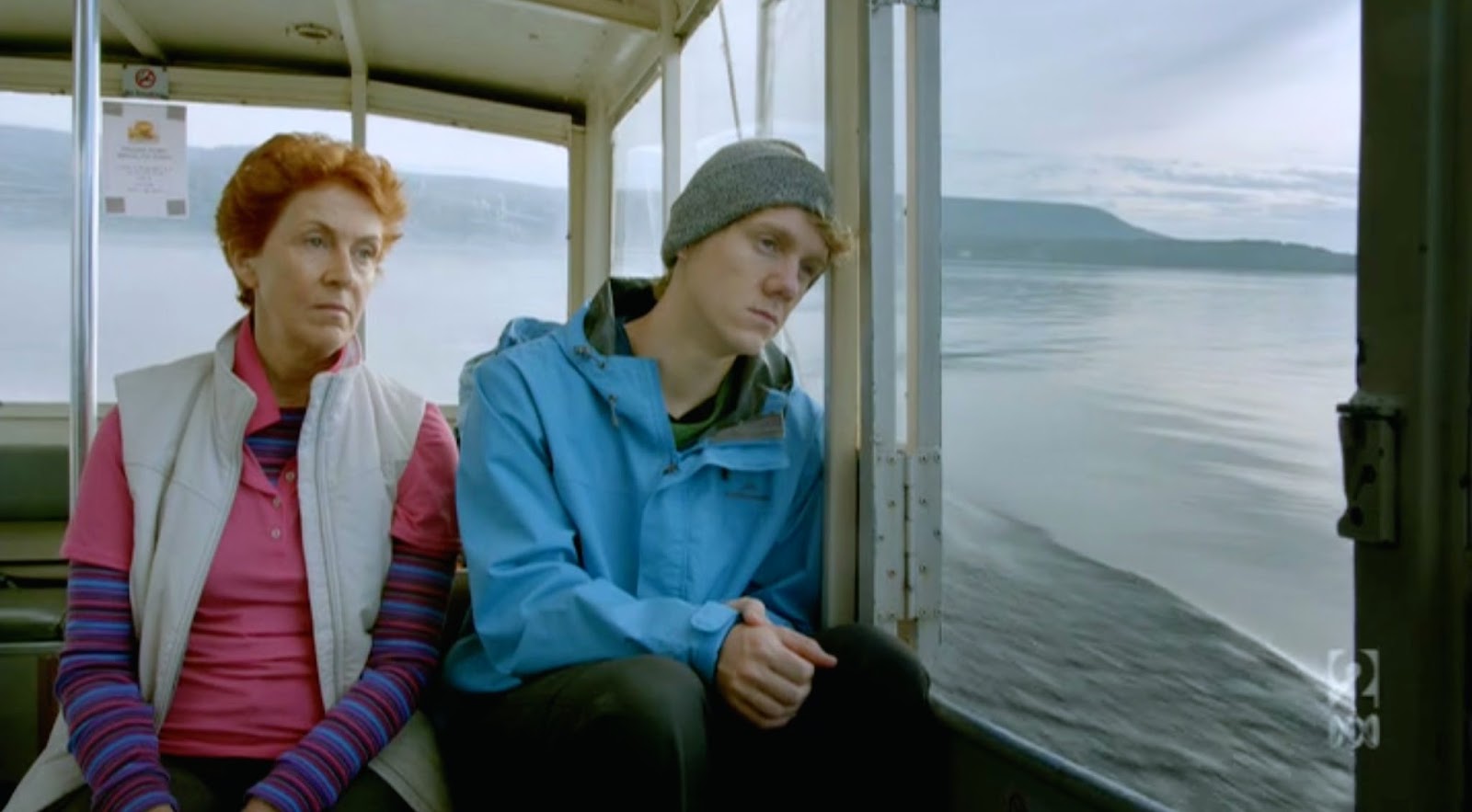
Please Like Me, “Scroggin”
This is one of those bottle episodes that doesn’t take place in a single location. Instead, “Scroggin” is a pivotal episode in the middle of Please Like Me’s second season, when Josh takes his mother Rose on a hike through remote Tasmania as a way to cope with a friend’s recent suicide. The episode features only Josh and Rose, solidifying it as a bottle episode. On their hike, the two fight the forces of nature (though they never cross a tasmanian devil, much to Josh’s disappointment), smoke some weed, reflect on Ginger’s suicide, and confront each of their feelings about Rose’s own suicide attempts. It’s expertly written and acted, and provides the type of emotional catharsis that says five days out in the wilderness isn’t going to fix things; perhaps nothing will, but at least some conversation was had. –Katey Stoetzel
Advertisement
Last Words
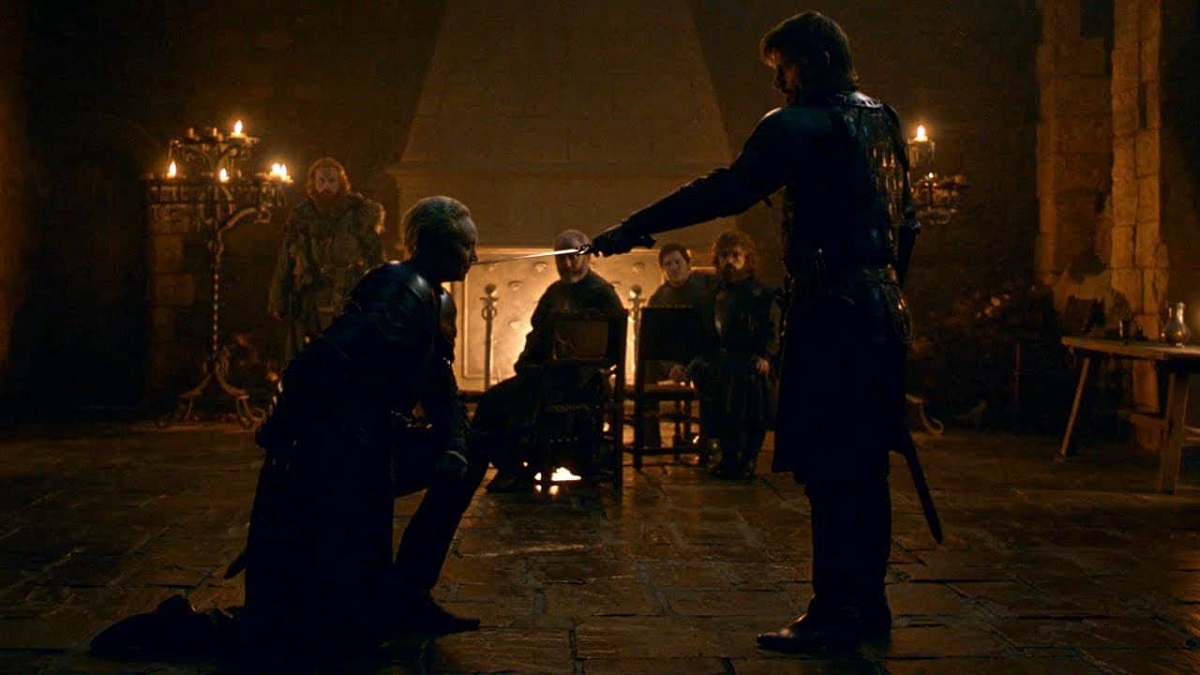
Game of Thrones, “A Knight of the Seven Kingdoms”
They’re on the brink of war with the dead. “A Knight of the Seven Kingdoms,” the best episode of Game of Thrones’ final season, sees a lot of downtime for our characters, who have traveled far and wide over eight seasons only to be thrown together in a fight for humanity. On this last night together before taking on the Night King’s army, grievances are put aside, relationships kindled, secrets revealed, and an honor well past its due is finally served. Within the halls of Winterfell, humanity won before the war even started. (And let’s face it, by the conclusion of the very next episode, most of this fantastic groundwork from a character standpoint is moot anyway, so let’s just leave it at this). –Katey Stoetzel
Time Conundrums
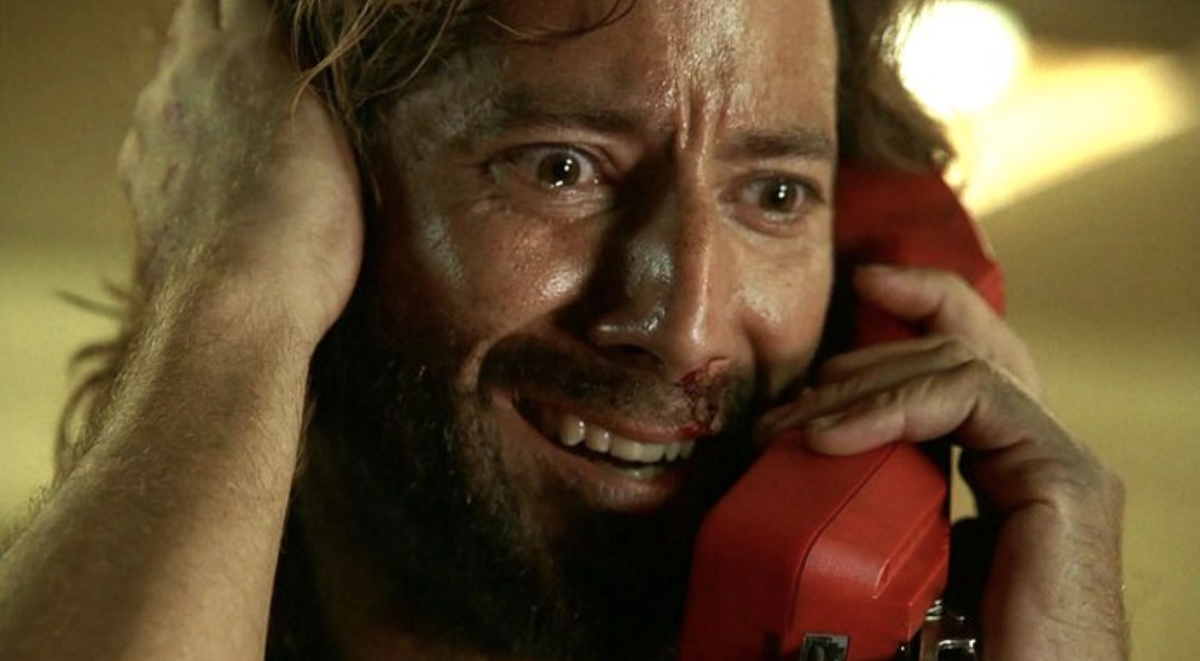
Lost, “The Constant”
How do you tell a love story over seven years, thousands of miles, and with one half of the partnership fluctuating across time? You make “The Constant.” It’s a bit complicated for a traditional bottle episode, but this Desmond-centric tale of time travel is a classic character-focused episode of Lost. Trapped on the boat thought to be their saviors, Desmond fights for survival as his mind jumps between present day and the past, searching for answers but also for an anchor, his constant — Penny. No matter how much sci-fi jargon Dr. Faraday spouts at us to explain what’s happening, this is a love story through and through, the kind where belief and faith are at the center and a simple promise of keeping the same phone number for seven years without explanation is the deepest expression of love. –Katey Stoetzel
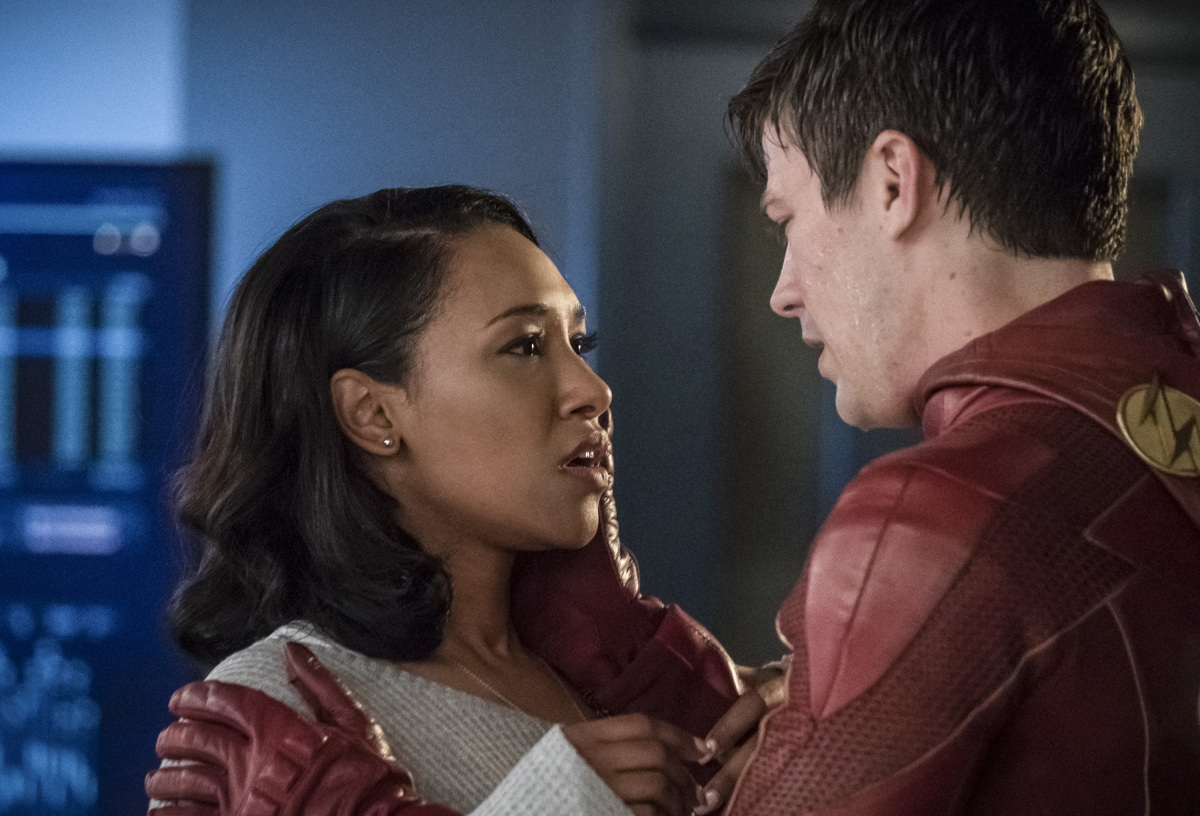
The Flash, “Enter Flashtime”
This episode of The Flash is probably the closest the show has ever gotten to a traditional bottle episode. “Enter Flashtime” is unique in that a large part of the narrative action takes place within the span of seconds. After a nuclear bomb detonates, Barry (Grant Gustin) enters Flashtime — which is what happens when time seems to come to a standstill relative to Barry’s superspeed — to save Central City. The episode is incredibly high-stakes, suspenseful, and cleverly employs other speedsters like Jay Garrick (John Wesley Shipp) and Jesse Quick (Violett Beane) in what is her last appearance on The Flash. At the heart of the season four episode, however, is Barry and Iris’ relationship, with the episode further cementing their deep and powerful connection to each other and, more interestingly, Iris’ grounding ties to Barry’s powers. —Mae Abdulbaki
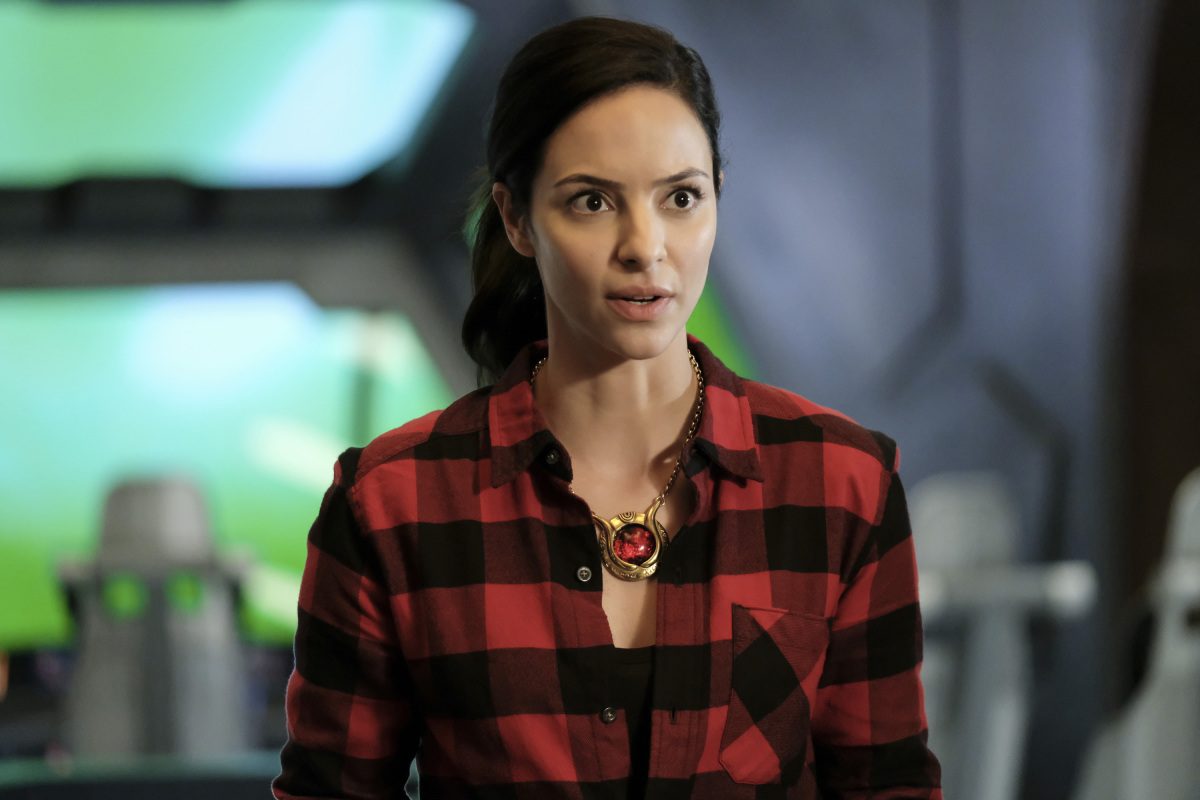
Legends of Tomorrow, “Here I Go Again”
When Zari (Tala Ashe) joined the Waverider, it took her quite a while to accept the fact that she may not be able to warp events to save her family from a tragic fate. In this Groundhog Day-style episode, Zari is the only one trapped in a time loop, forced to repeat the same events in the hour leading up to an explosion that blows up the Waverider and its residents. It’s perhaps the only episode of the superhero series set completely on the ship. As she investigates the conundrum, Zari winds up learning more and more about the people she’s come to call friends, as well as her place on the ship and in history. The lesson she ultimately learns is that issues can’t be resolved through taking shortcuts and, sometimes, the hardest thing to do is accept the fact that time can’t be changed for personal reasons. The episode is Legends of Tomorrow at its absolute best and cements Zari as a true member of the team, all while brilliantly developing her character and plot. —Mae Abdulbaki
Advertisement
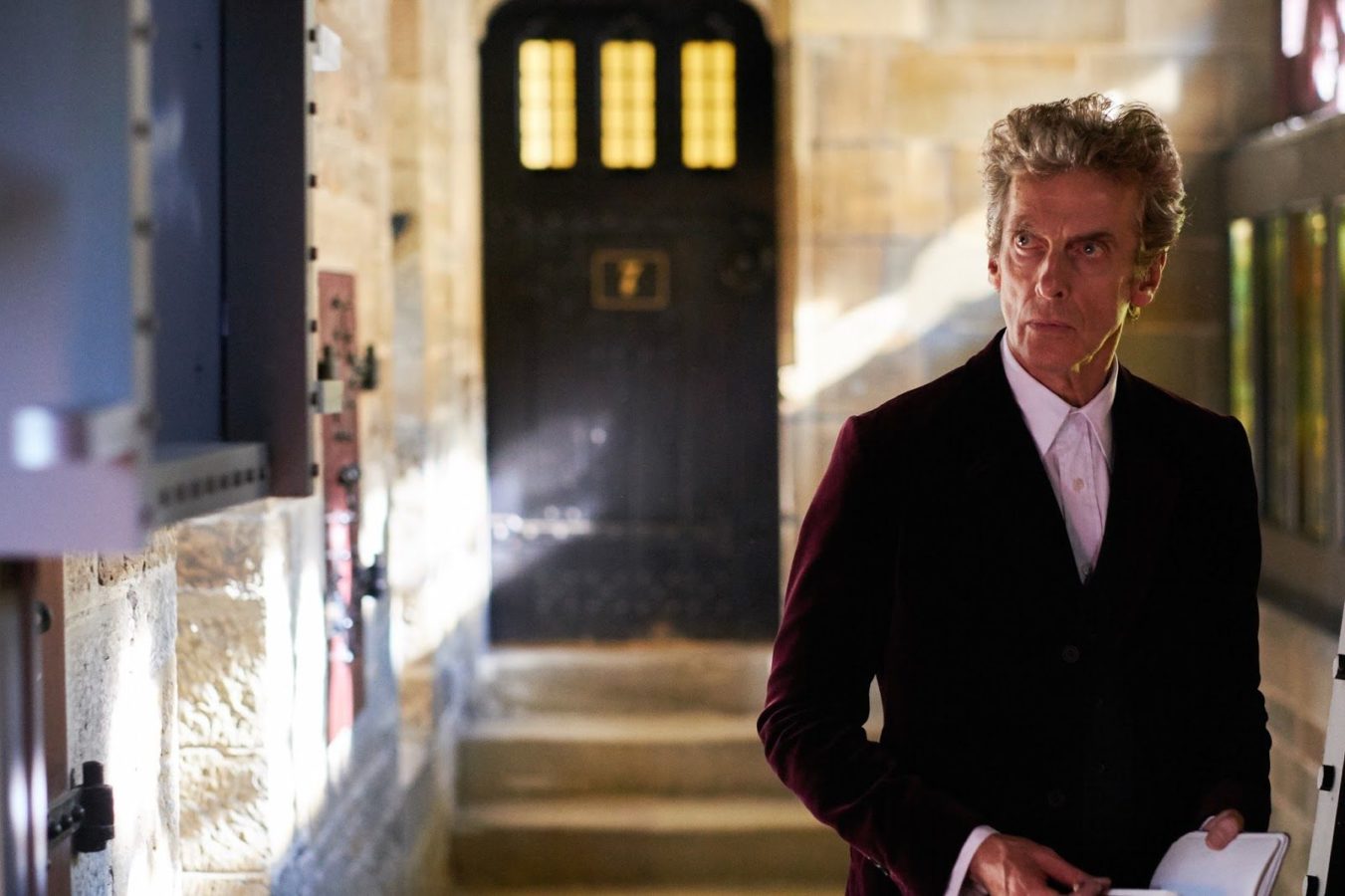
Doctor Who, “Heaven Sent”
Doctor Who has had its fair share of dark episodes, but “Heaven Sent” takes it a step further to explore the complexities of grief. The season nine episode takes place immediately following the death of the Doctor’s companion, Clara Oswald (Jenna Coleman). Peter Capaldi’s iteration of The Doctor is teleported to a remote castle where he’s chased by a shadowy figure seeking the truth. It takes a long time for him to figure out that he’s trapped in a pseudo time loop that sees him repeating the same actions, helpless and with no escape in sight. As he cycles through the stages of grief — stuck in a prison of his own making — The Doctor eventually finds clarity in repetition, hope in despair, and solace in Clara’s memory, gone but not forgotten. It’s not only a rare bottle episode of Doctor Who, but an outstanding one-man showcase of Capaldi’s talents. —Mae Abdulbaki
Board Games
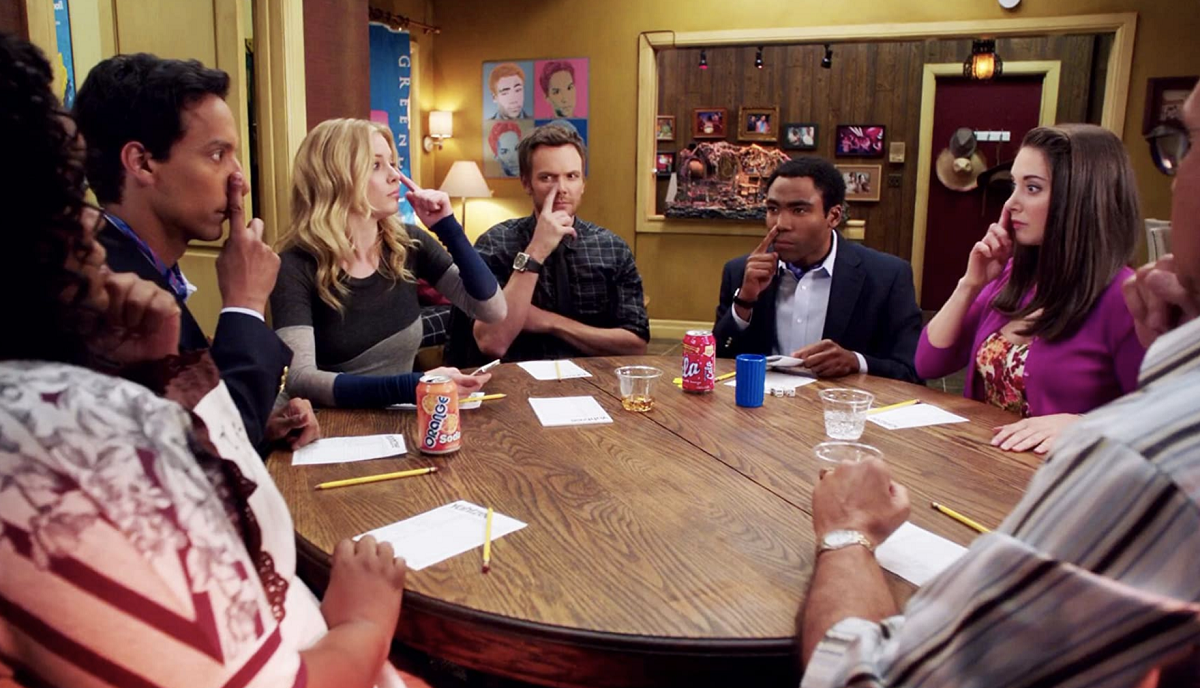
Community, “Remedial Chaos Theory”
How else do you throw a housewarming party if not for a game of Yahtzee! But only at Abed and Troy’s housewarming party does it turn into hypotheticals on the existence of alternate timelines based on who leaves the room to get the pizza. It’s the episode that spawned “the darkest timeline” (re: reality?) and the gif of Donald Glover running into a room that’s literally on fire. It’s got great jokes and great payoffs, but most importantly, it concludes with the one truth we always knew: Jeff’s kind of a bummer. –Katey Stoetzel
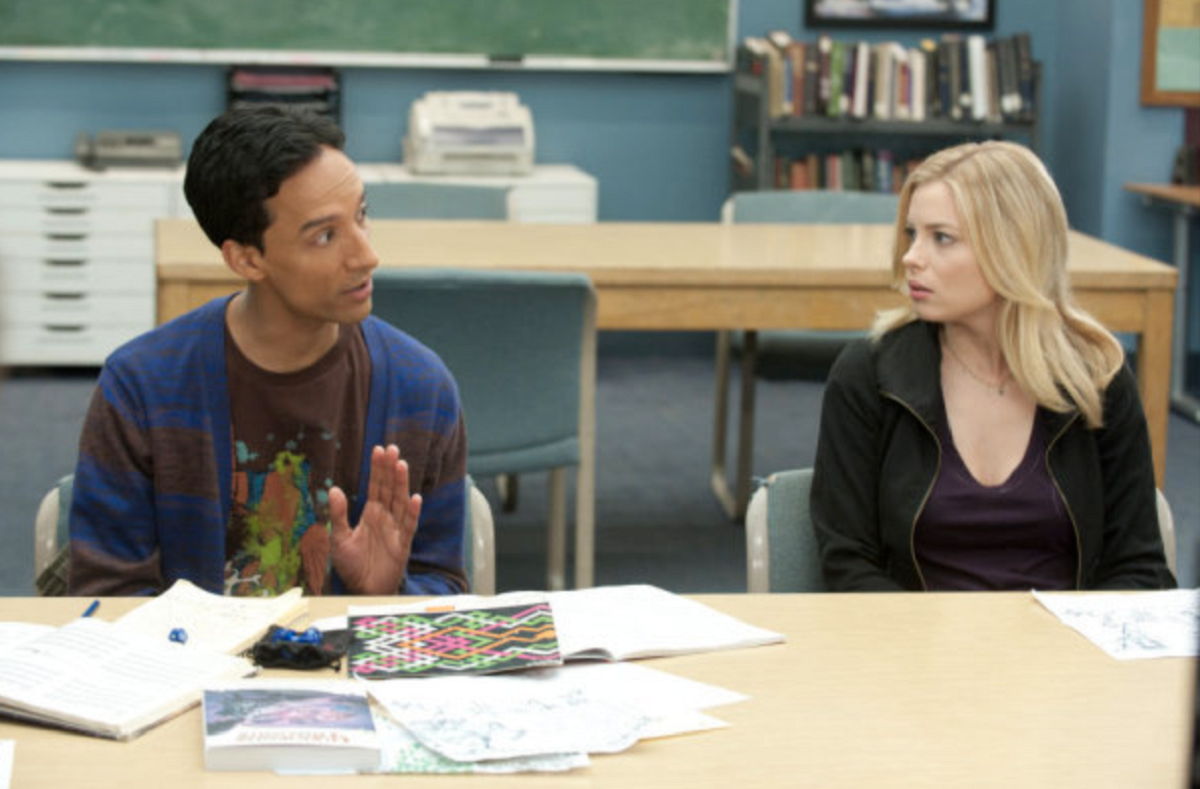
Community, “Advanced Dungeons and Dragons”
Another bottle episode of Community that takes place entirely in the study room, but this time everyone’s on the same side. Sort of. In an attempt to cheer up new friend Neal, the study group invites Neal to a game of Dungeons and Dragons, despite most of them never having played before. Abed acts as the dungeon master and the voice of plot for the episode, with Danny Pudi providing remarkable skill at nailing wicked fast dialogue. Everyone’s getting along, until Pierce comes along, jealous he wasn’t invited to the game. Even though the episode is just the group sitting around a table, sound effects mimic a fantasy adventure. –Katey Stoetzel
Countdowns
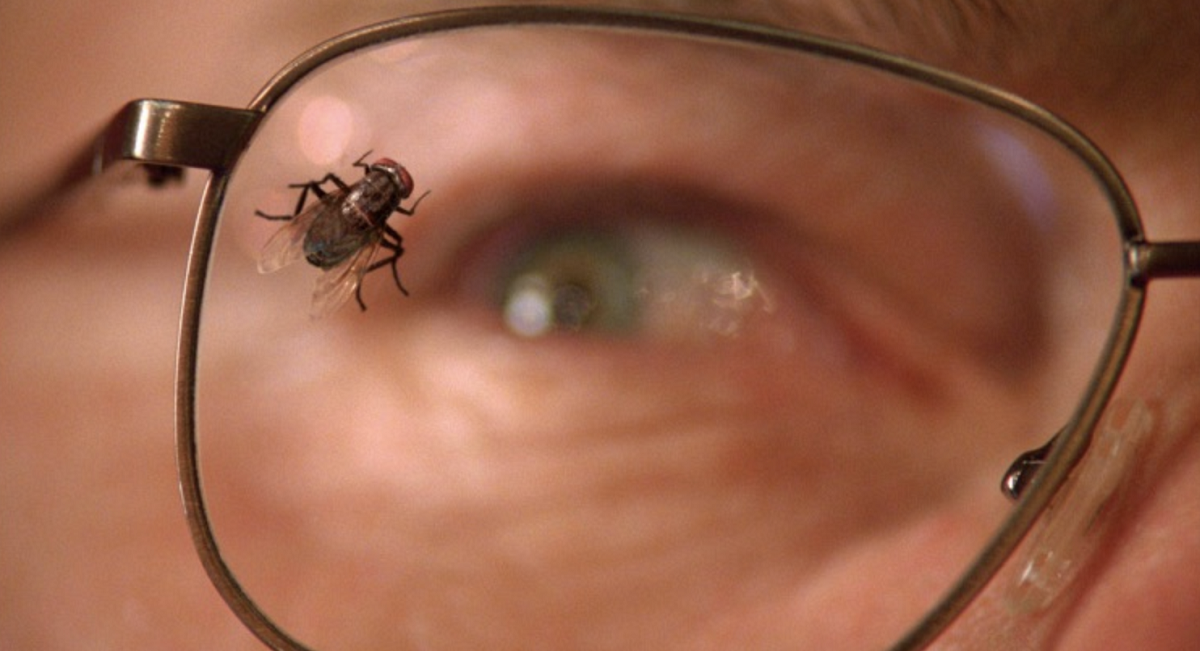
Breaking Bad, “Fly”
There’s a fly in the lab, and Walt needs to kill it before it contaminates the meth. Suffering from insomnia and paranoia, Walt and Jesse spend the entire episode trying to kill the fly, even as they’re on deadline to produce a certain amount of meth for Gus. It’s a pretty classic bottle episode where two characters are stuck in a room together, both of them with secrets and nothing but time to air them out. –Katey Stoetzel
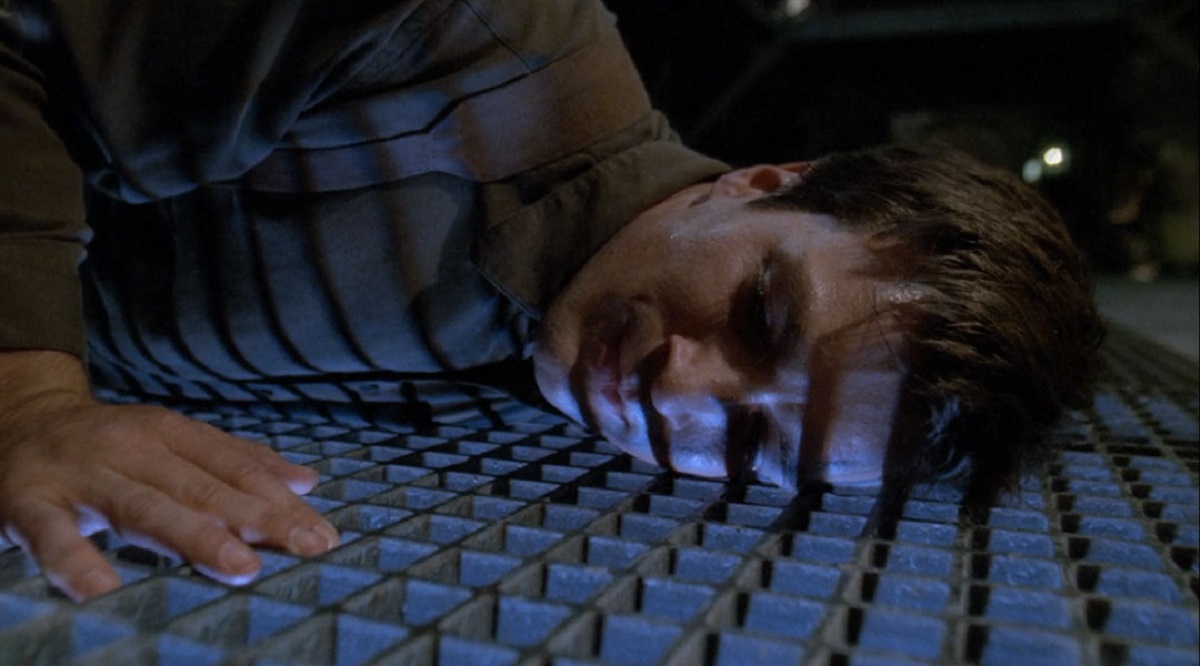
Firefly, “Out of Gas”
Firefly’s TV run may have been short-lived, but “Out of Gas” is a fantastic reminder of what made the show so good. The episode is another one that takes place solely on a ship. After an explosion leaves Zoe (Gina Torres) injured and a fire set to suck the rest of the oxygen from the Serenity, Mal (Nathan Fillion) orders everyone to leave and take the shuttles. He stays behind in hopes that another ship picks up their distress signal, only to be met with disaster once another captain attempts to take over. A bulk of the episode employs the use of flashbacks to tell the story of how the crew came to join the Serenity, all while the suspense in the present threatens to destroy the very thing that helped bring them together. The episode is a love letter to the characters and the strength of their relationships, serving as a reminder that loyalty and camaraderie is what holds them together. —Mae Abdulbaki
Investigation Station
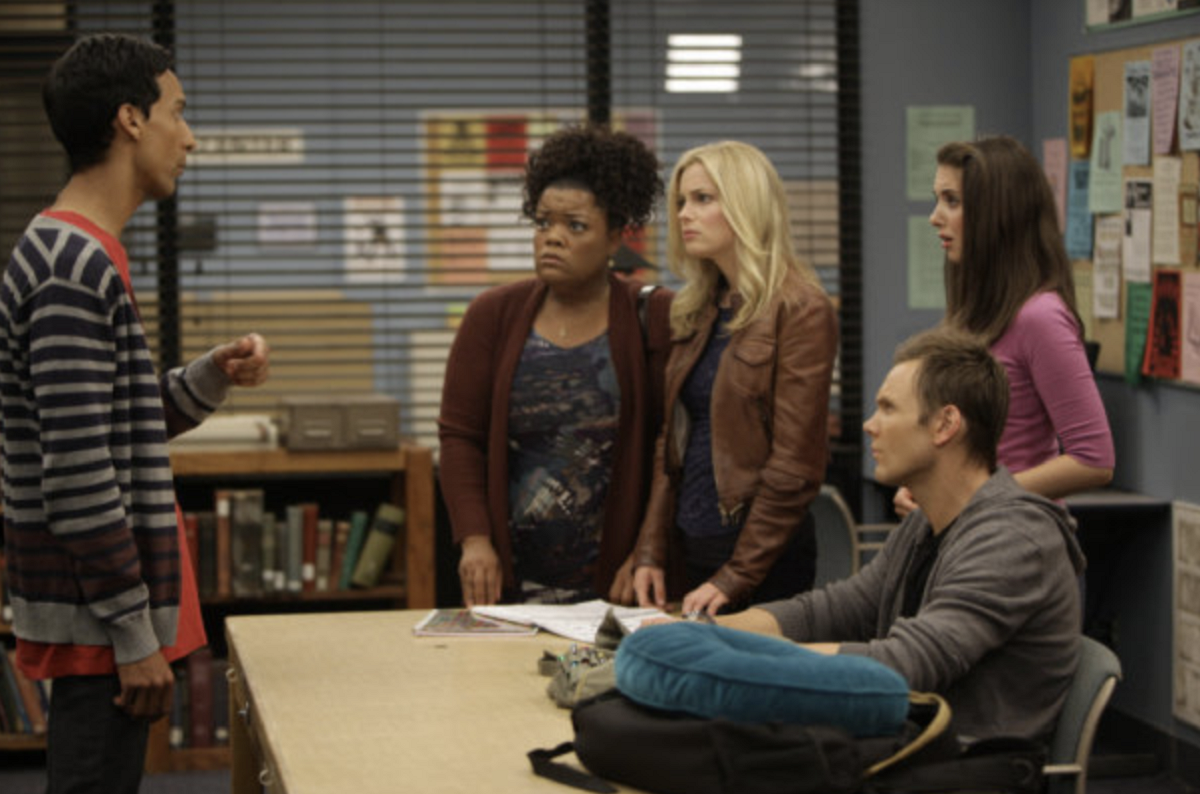
Community, “Cooperative Calligraphy”
Annie’s lost her purple pen. She believes someone in the study group has stolen it. Abed doesn’t want to do a bottle episode, but Jeff declares they are anyway. In true Community form, “Cooperative Calligraphy” defines itself as a bottle episode through both Abed and Jeff as we’re stuck in the study room witnessing the study group lose their collective minds over who has Annie’s purple pen. Secrets are revealed (including who took the pen, though it’s a blink-and-you’ll-miss-it occurrence), the group strips all the way down, Britta expresses more pseudo-activism, Troy only carries a pillow in his backpack, and Pierce is still Peirce. There are many bottle episodes in Community (two more on this list, even), but “Cooperative Calligraphy” was the first, and for sure, the best. –Katey Stoetzel
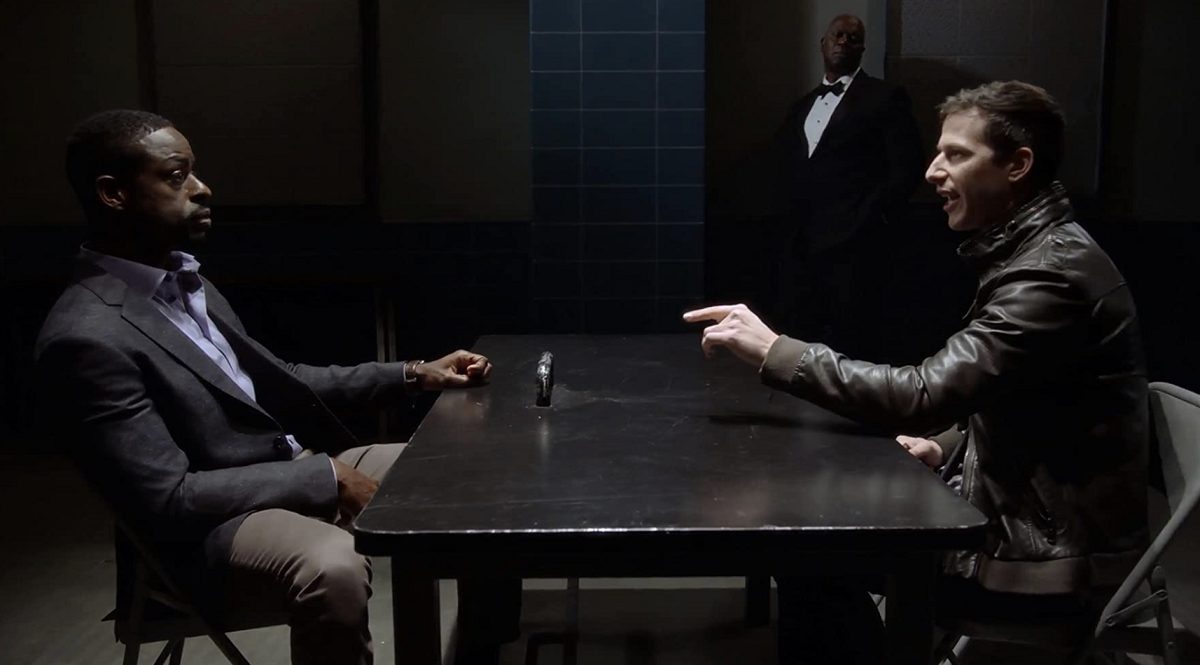
Brooklyn Nine-Nine, “The Box”
Sterling K. Brown guest stars as a suspect being investigated by Detective Jake Peralta and Captain Raymond Holt. The entire episode practically takes place inside the interrogation room as Jake and Holt come up with ways to get Brown’s Philip Davidson to confess to murder. As each tactic gets more ridiculous and Jake and Holt fall victim to their own schemes (the best one is when Holt goes on a tangent about the medical community co-opting the term “doctor”), the episode ends in a shouting match between Jake and Davidson just as time runs out for the detectives to keep Davidson in custody. –Katey Stoetzel
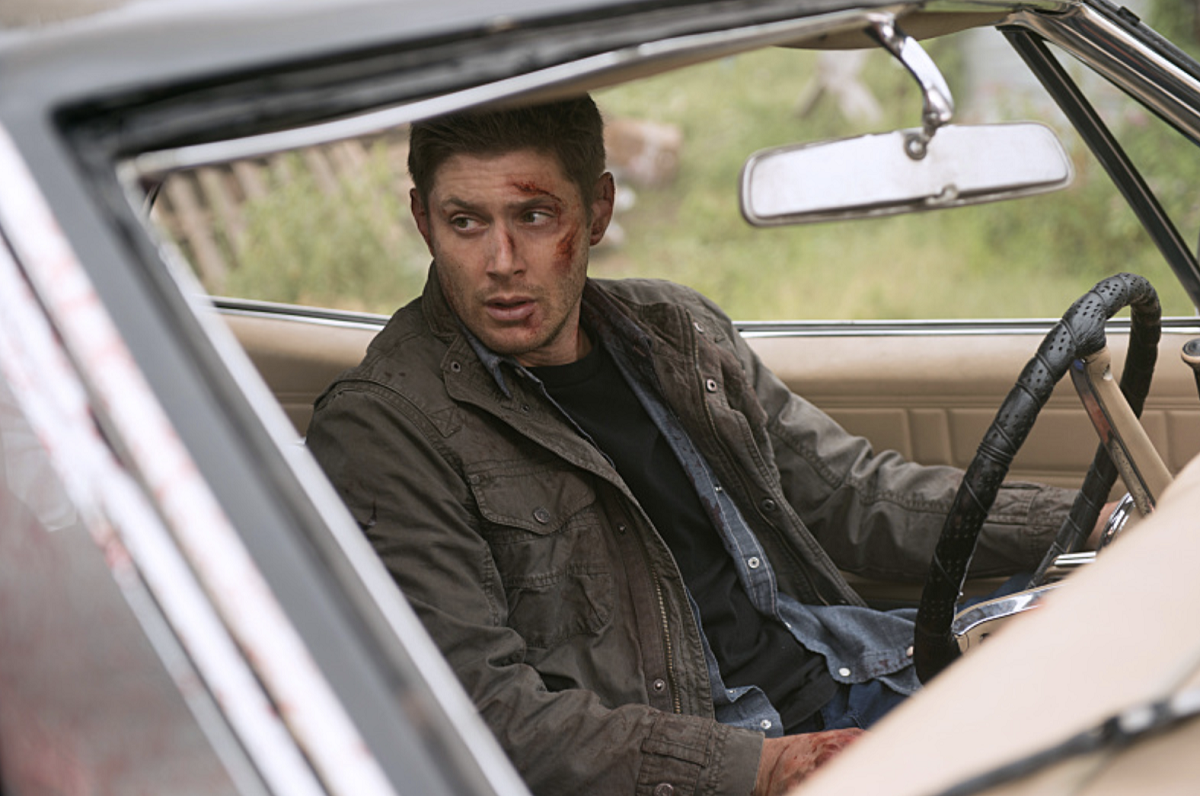
Supernatural, “Baby”
This is a bit of a weird one, at least if you’re not familiar with Supernatural. On the show, Dean’s 1967 Chevy Impala (which he often refers to as “baby”) is practically its own character. Thematically, it operates as Dean and Sam Winchester’s home for eight and a half seasons before the brothers start living at the Men of Letters bunker. In season 11, the Impala got an episode all on its own, with events unfolding through the car’s perspective. For such a ridiculous concept, it works pretty effectively. We get all the same story beats of any supernatural investigation, but we also get to see for the first time the moments in between, the quiet reflections on the open road, and the deeper, more profound bonding of two brothers who’ve been to hell and back but are still able to find comfort in their one true home. –Katey Stoetzel

Friends, “The One Where No One’s Ready”
As Ross (David Schwimmer) works to get the rest of his friends — Rachel (Jennifer Aniston), Monica (Courteney Cox), Phoebe (Lisa Kudrow), Chandler (Matthew Perry), and Joey (Matt LeBlanc) — out the door in time to get to a black-tie event for his job, he becomes increasingly frustrated with everything that keeps getting in the way of them getting dressed and ready to leave. This may be one of the only episodes of the show’s entire ten-season run that doesn’t include a scene at their beloved coffee shop, Central Perk. “The One Where No One’s Ready” is cleverly set up and functions like a staged play, with characters entering and exiting rooms at a quick pace, all while in one setting. And, while Friends has a ton of incredibly memorable moments, quite a few of them come from this episode, including Joey walking in wearing all of Chandler’s clothes. —Mae Abdulbaki
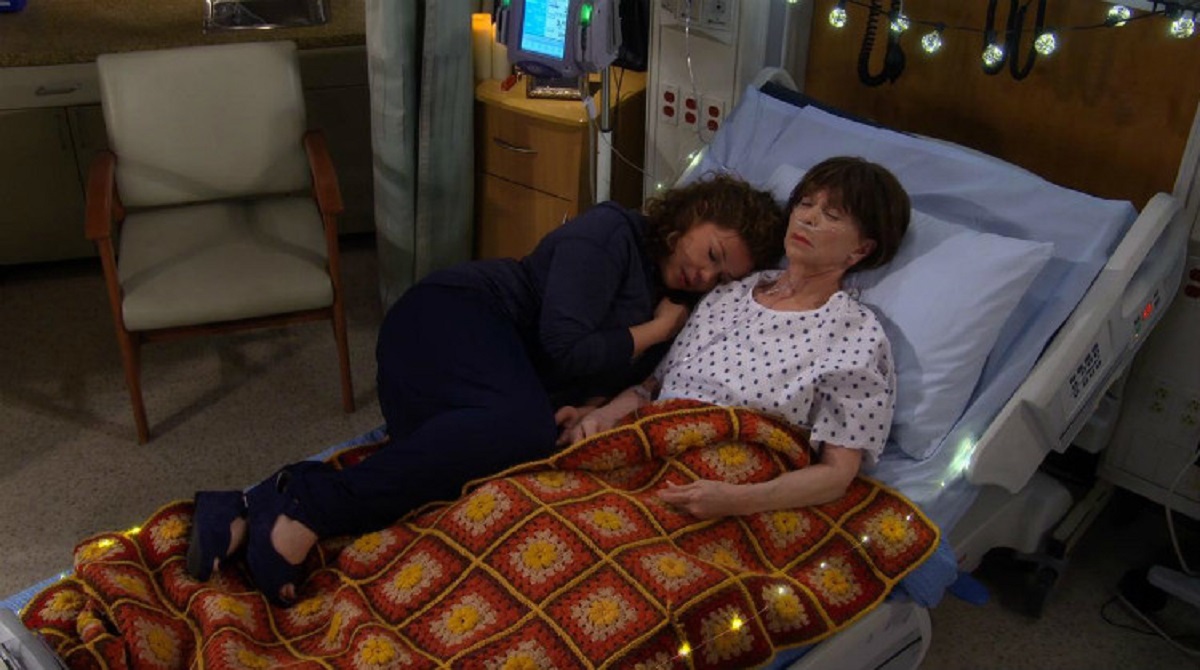
One Day at a Time, “Not Yet”
“Not Yet” is a tearjerker of an episode. After Lydia (Rita Moreno) suffers a stroke, Penelope (Justina Machado) and the rest of the family maintain their bedside vigil, hoping that Lydia will make a full recovery. While her family tearfully share their stories, their regrets, and their deep love for her, Lydia herself has an out-of-body experience that puts her in a kind of limbo. Does she heed the call of death and join her beloved Berto or does she stay behind and continue living? While the season two finale is punctuated with lovely and heartfelt flashbacks, it’s mostly set inside Lydia’s hospital room, with each character getting a distinct and emotional moment by the Alvarez matriarch’s side. The episode is incredibly deep, beautiful and moving, mining the strength of the relationships Lydia has cultivated with everyone — including the often tumultuous relationship she has with Penelope — to great effect. —Mae Abdulbaki
Advertisement







